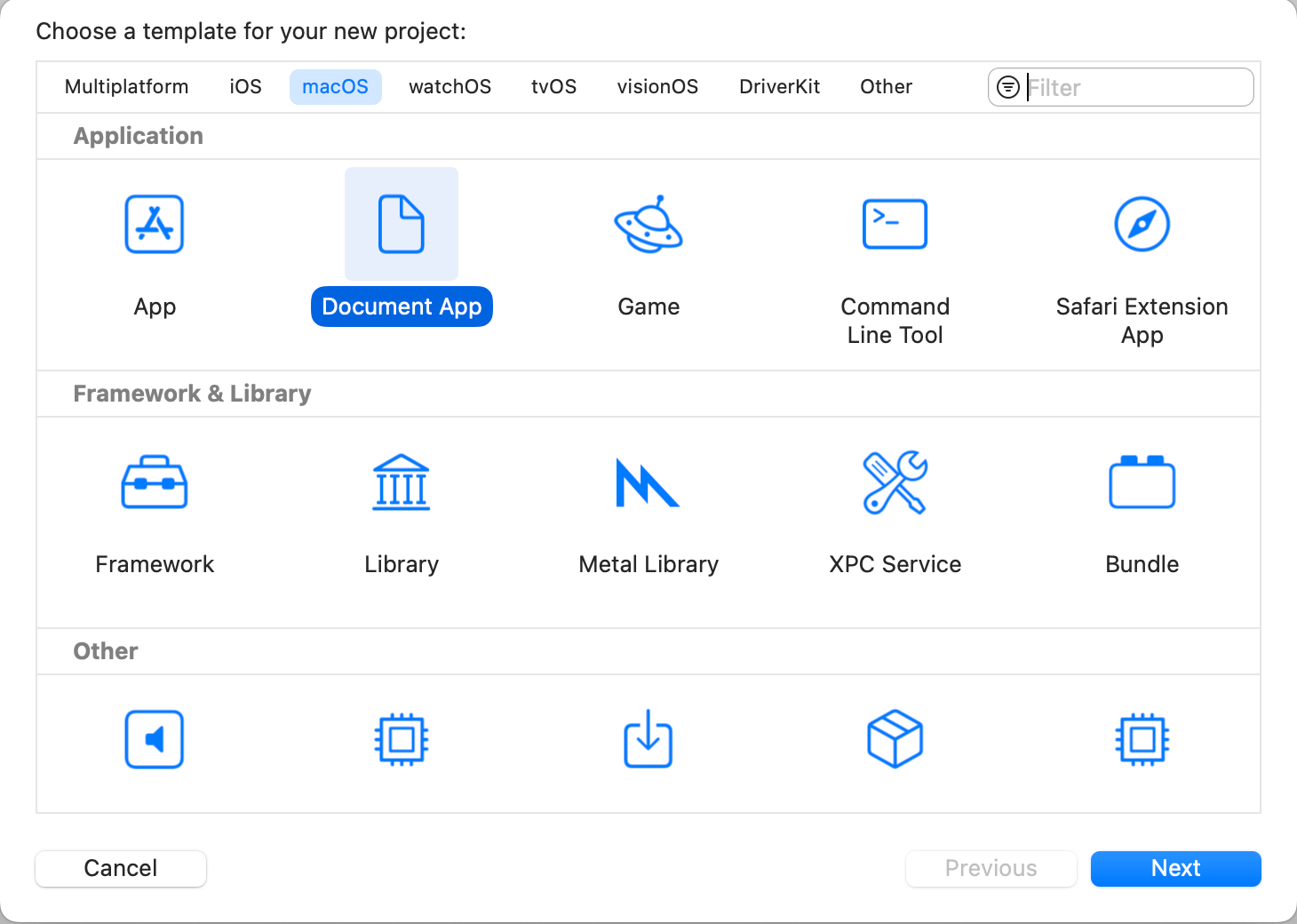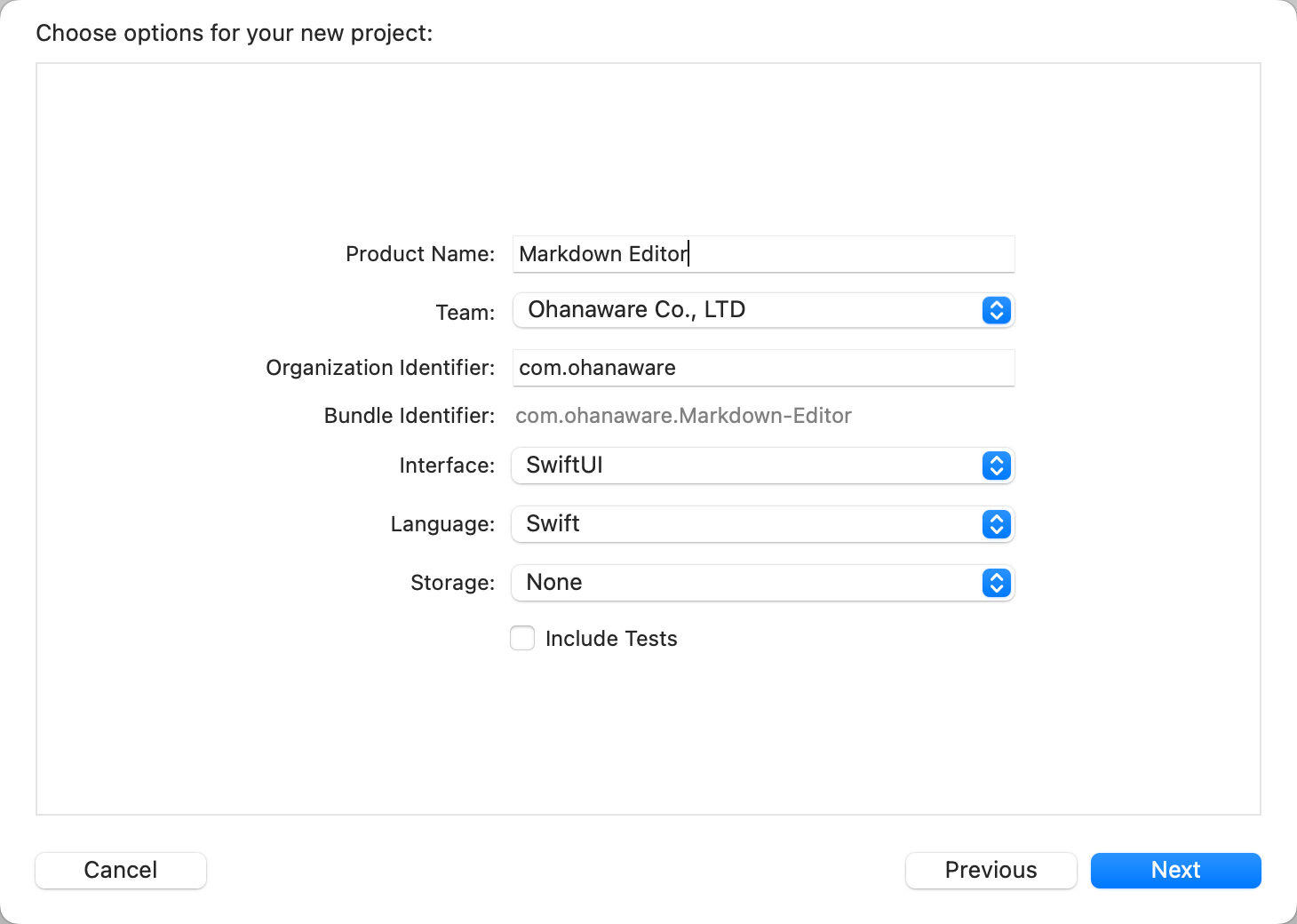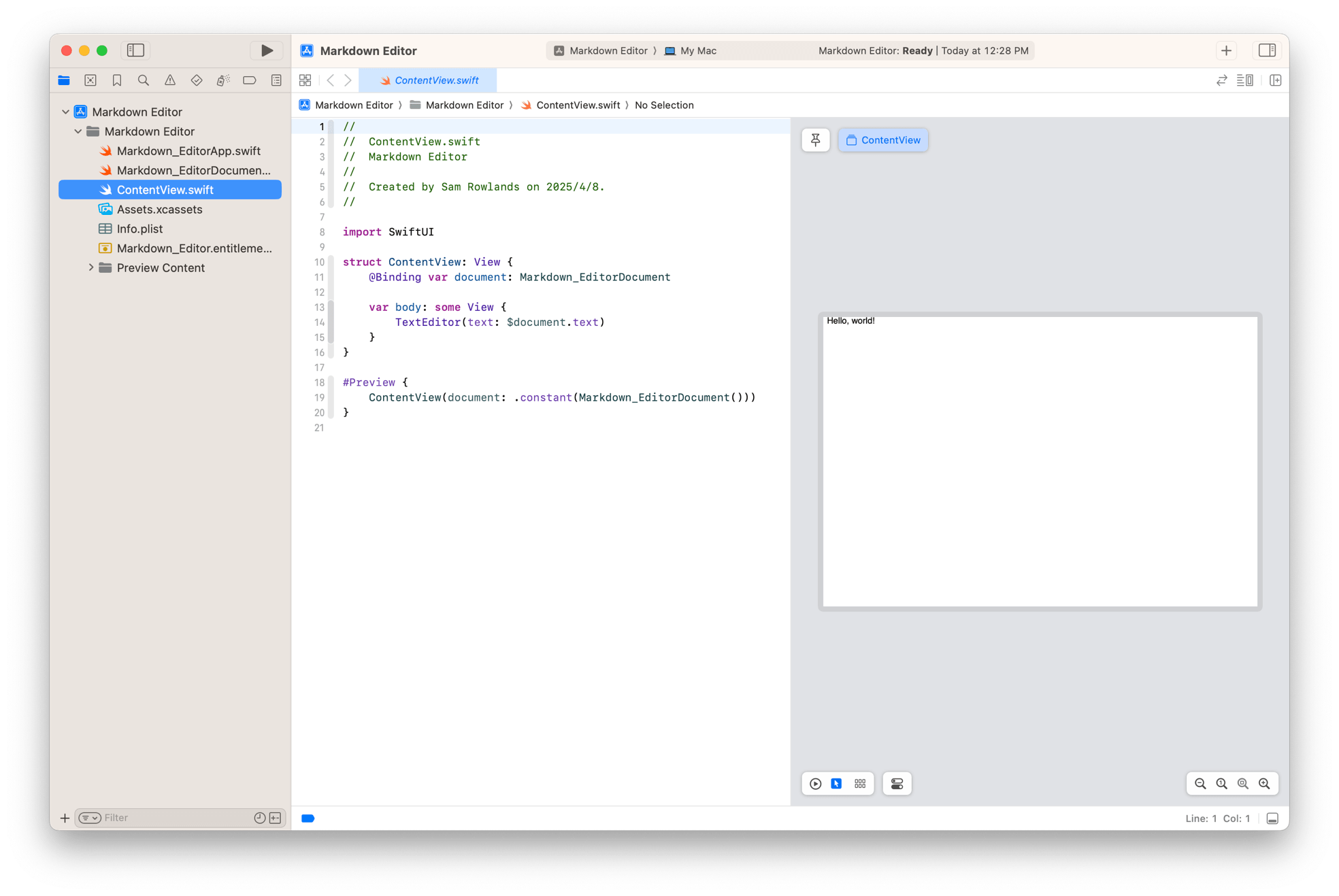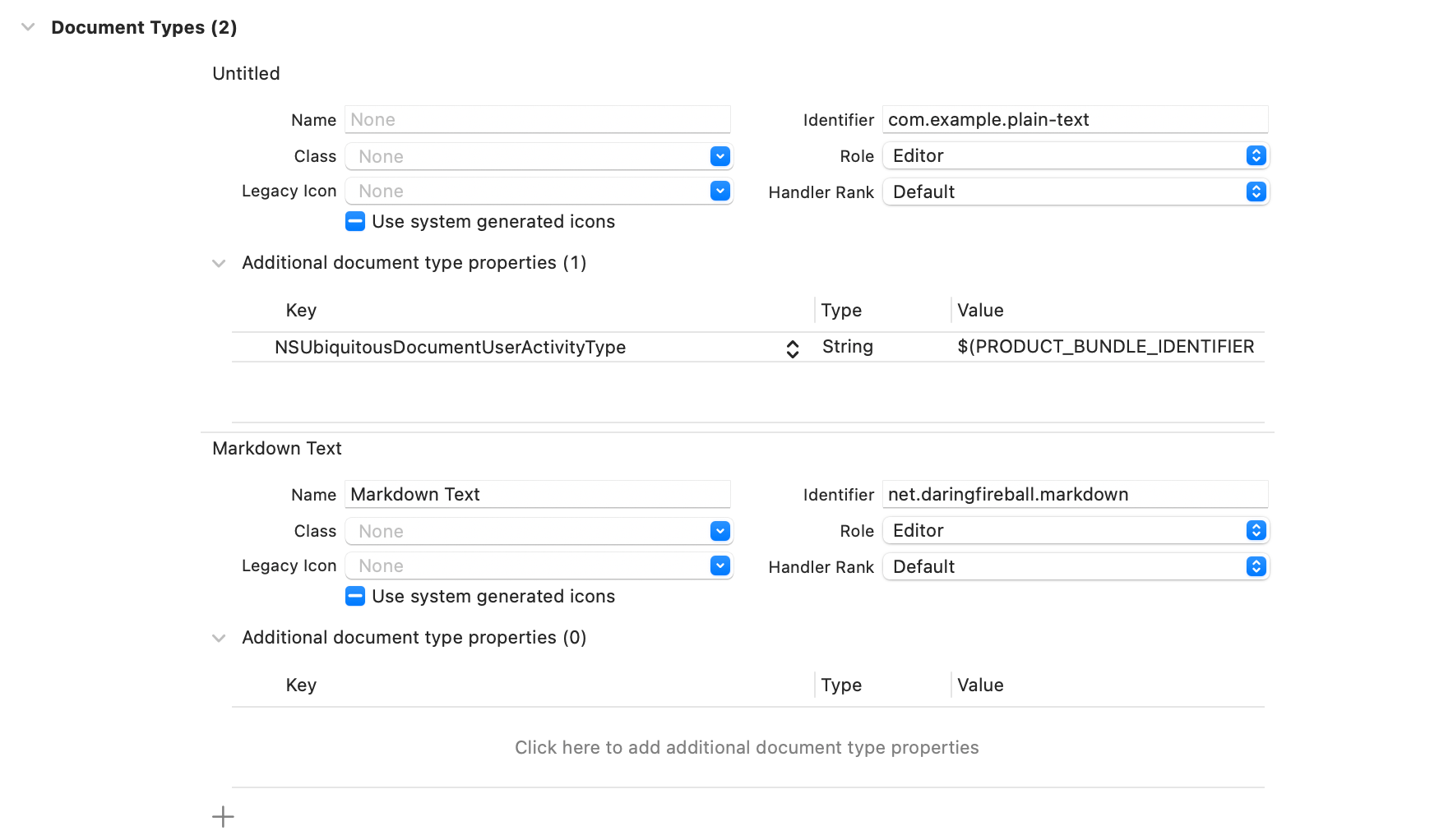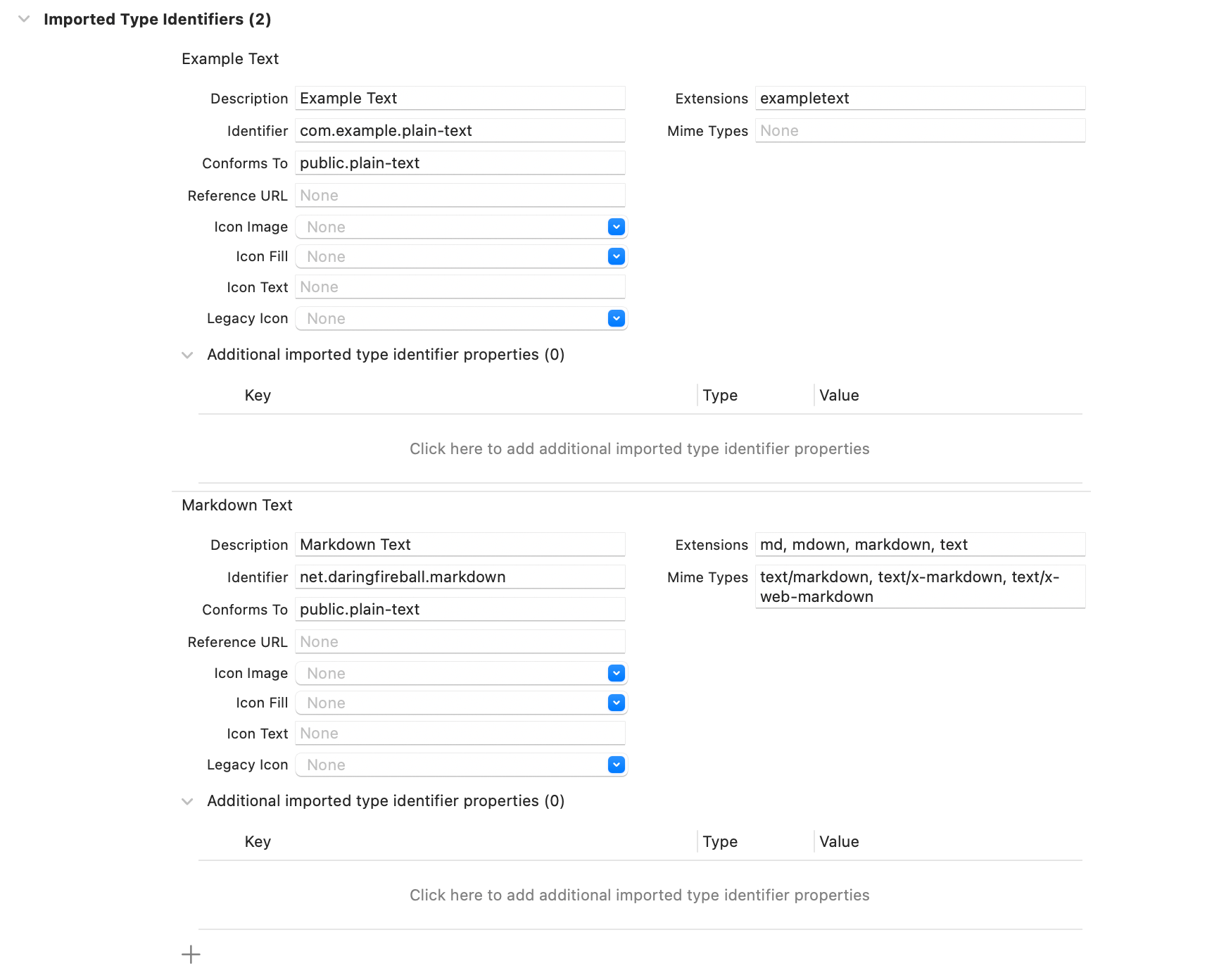3. Build the user interface
One of the common traits of a Markdown editor is it's live preview of the formatted text. This kind of preview can be very time consuming, but we're going to draw on another feature of SwiftUI and that's built-in Markdown rendering. It doesn't cover the entire formatting specification, but for the sake of this tutorial it will do.
Select "ContentView.swift" from the sidebar. The first thing I want to do is to alter the font of the text editor. For this we'll use the .font modifier. Modifiers allow us to customize our SwiftUI views. There are lots of modifiers for all sorts of customization, but for the moment, we're only going to focus on what we need.
Find the var body: some View { ... } code block and add a new line under TextEditor(text: $document.text), then enter in the modifier code .font( .body ). The .body value is the same standard font used elsewhere in SwiftUI.
var body: some View {
TextEditor(text: $document.text)
.font( .body )
}
The preview should update showing the text "Hello World" in a much easier to read font than before.
Beneath the .font modifier, add the following line of code
Text( "[Click here to visit the Ohanaware website](https://www.ohanaware.com)" ) This Text view simply displays one or more lines of text.
Once again the preview should update and we can see a text label reading "Click here to visit the Ohanaware website". We entered in a markdown link and it's correctly displaying it. Run the project and click on that link, it takes you to the Ohanaware website. This is how we can preview and interact with markdown.
Now wrap the TextEditor and Text code in a HSplitView { ... } as shown below. A HSplitView will align the views horizontally and give us a divider that can be dragged to the left or right to increase or decrease control sizes.
var body: some View {
HSplitView {
TextEditor(text: $document.text)
.font( .body )
Text( "[Click here to visit the Ohanaware website](https://www.ohanaware.com)" )
}
}
The preview will update once again, and this time the TextEditor and Text views are horizontally in line with each other, but their sizes look wrong.
We'll fix that by using the .frame modifier on both the TextEditor and the Text views so they have the same width and height. Beneath the .font( .body ) modifier line add the following code .frame( maxWidth: .infinity, maxHeight: .infinity ).
Then add the same modifier beneath the Text ( ... ) view line. Once done, the preview will update and it should look better. Run the project, find the middle of the window and drag it left and right. Perfect.
But the Text is centered and that isn't what we want, which we can fix by altering the Text .frame modifier to include alignment.
Change the modifier to .frame( maxWidth: .infinity, maxHeight: .infinity, alignment: .topLeading ). Notice the alignment is .topLeading and not topLeft, this is because on a right-to-left system, it would be aligned to the right. Neat huh?
The Text is now aligned correctly, but it's right up close to the edge, that is not a problem as we'll just add a .padding() modifier to the Text view. Your code should now look like below.
var body: some View {
HSplitView {
TextEditor(text: $document.text)
.font( .body )
.frame( maxWidth: .infinity, maxHeight: .infinity )
Text( "[Click here to visit the Ohanaware website](https://www.ohanaware.com)" )
.frame( maxWidth: .infinity, maxHeight: .infinity, alignment: .topLeading )
.padding()
}
}
If you run the project now, you can type in markdown, you can adjust the preview size via the HSplitView, but our text constantly displays a link to the Ohanaware website, where as we want it to show a preview of what we entered in the left hand side. For this to work, change the Text View line to Text( document.text ).
Notice how when we used document.text with the TextEditor, theres a dollar sign in front, but not with Text, that's because the TextEditor takes a Binding to a String property and not the value of the String property. If it took just the value, when you change the text in the TextEditor the actual document wouldn't get updated.
Run the project and enter the following into the TextEditor This is some **bold** text, while this is *italic* and this is ~strikethrough~. While the text auto updates every time we change it, it's not respecting the Markdown, we know the Text view can display markdown as we saw earlier so what gives?
When you hardcode some text into a Text view, it automatically makes this Localizable, which simplifies translating a program, but it's this localizable text that can render markdown. So we need to tell SwiftUI to use a LocalizedStringKey by casting our string into one. Once again change the Text code, so it now reads Text( LocalizedStringKey( document.text ) ).
var body: some View {
HSplitView {
TextEditor(text: $document.text)
.font( .body )
.frame( maxWidth: .infinity, maxHeight: .infinity )
Text( LocalizedStringKey( document.text ) )
.frame( maxWidth: .infinity, maxHeight: .infinity, alignment: .topLeading )
.padding()
}
}
Run the project and bing badda bom, it now uses the markdown formatting. Congratulations you've made a multi document Markdown editor, that automatically supports multiple windows, window tabs, opening, saving, undo, redo, version history and window restoration.

